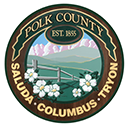Spring Grazing and Laminitis Risk
go.ncsu.edu/readext?992958
en Español / em Português
El inglés es el idioma de control de esta página. En la medida en que haya algún conflicto entre la traducción al inglés y la traducción, el inglés prevalece.
Al hacer clic en el enlace de traducción se activa un servicio de traducción gratuito para convertir la página al español. Al igual que con cualquier traducción por Internet, la conversión no es sensible al contexto y puede que no traduzca el texto en su significado original. NC State Extension no garantiza la exactitud del texto traducido. Por favor, tenga en cuenta que algunas aplicaciones y/o servicios pueden no funcionar como se espera cuando se traducen.
Português
Inglês é o idioma de controle desta página. Na medida que haja algum conflito entre o texto original em Inglês e a tradução, o Inglês prevalece.
Ao clicar no link de tradução, um serviço gratuito de tradução será ativado para converter a página para o Português. Como em qualquer tradução pela internet, a conversão não é sensivel ao contexto e pode não ocorrer a tradução para o significado orginal. O serviço de Extensão da Carolina do Norte (NC State Extension) não garante a exatidão do texto traduzido. Por favor, observe que algumas funções ou serviços podem não funcionar como esperado após a tradução.
English
English is the controlling language of this page. To the extent there is any conflict between the English text and the translation, English controls.
Clicking on the translation link activates a free translation service to convert the page to Spanish. As with any Internet translation, the conversion is not context-sensitive and may not translate the text to its original meaning. NC State Extension does not guarantee the accuracy of the translated text. Please note that some applications and/or services may not function as expected when translated.
Collapse ▲Spring grazing is often associated with laminitis concerns for many area horse owners. Cool season grasses (such as fescue) are most often the culprit in pasture-associated laminitis cases because the sugar these grasses store during photosynthesis isn’t self-limiting. Depending on environmental conditions, non-structural carbohydrates (NSC’s) can accumulate in the plant. Excess accumulation of NSC’s can occur when cool nighttime temperatures restrict the plant’s ability to utilize the sugar made and stored during the warm, sunny days (conditions that occur in spring and fall).
For horses considered high-risk for developing laminitis, such as those that are easy keepers, overweight, are insulin resistant, or have Cushings, grazing fescue or other cool-season forages may need to be avoided all together in spring and fall. Both grazing muzzles and dry lot turnout may be options to reduce forage consumption in these horses, while still allowing for exercise. Feeding a lower calorie/mature hay before turn-out could also help prevent horses from gorging. It’s important to monitor body condition in these at-risk horses to prevent excess weight gain. This can be done by recording a BCS score or weigh tape reading monthly.
Although encouraging pasture growth may seem counter-intuitive, proper pasture
management is important to reducing NSC content in these forages. Overgrazed pastures expose the base of the plant, where most of the NSC is stored, to grazing horses. Maintaining pastures in a state of growth, with proper fertilization and by maintaining a height of at least 4- 6 inches is a good practice to reduce forage NSCs.
Well-maintained pastures can be an excellent resource, reducing feed and hay costs, providing much-needed free exercise for your horse(s), and reducing pollution from run-off. Many young horses, those that are lean and fit, and many without any previous laminitis episodes can graze safely in the spring, but remain aware of any changes in behavior or weight gain. Feet of grazing
horses can also be monitored for heat and/or a digital pulse, indicating a potential laminitis episode. Horses that have been on pasture 24/7 throughout the winter generally adapt as the pasture composition gradually changes. If you’re introducing a horse to a new pasture or if grazing has been limited through the winter, start by allowing the horse to graze for one hour then increase by 30 min every few days until a total time of four hours is reached. Grazing should be initiated early in the morning, when NSC content is the lowest. Pasture NSC builds throughout the day as the plant carries out photosynthesis; therefore, early morning hours, right before sunrise is when daily NSC concentrations are lowest. If you suspect your horse may be insulin-resistant, consult with your veterinarian. Feel free to contact me at the Extension Office at 828-894-8218 or by email Cassie_LeMaster@ncsu.edu with questions or if you need assistance designing a grazing plan that is best for your horse.




